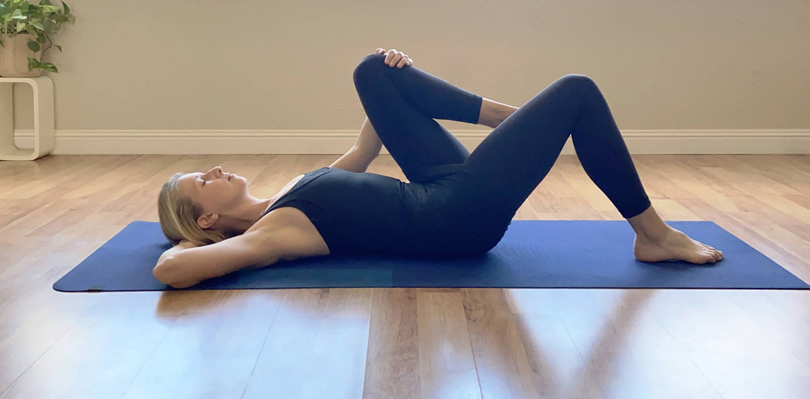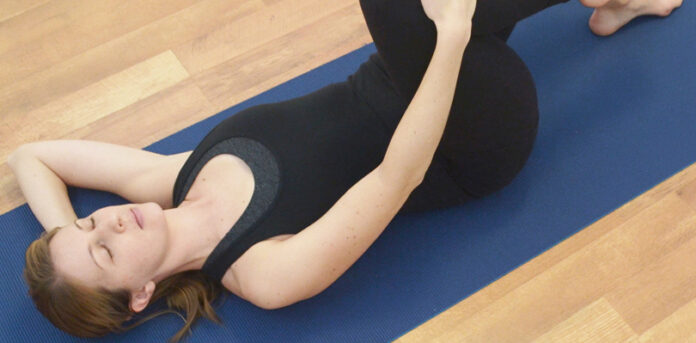In the fast-paced world we navigate today, stress and trauma often find their way into our lives, leaving us in need of effective and holistic solutions. Welcome to our comprehensive guide on somatic exercises, a powerful and transformative approach to alleviating the burdens of stress and trauma. In this enlightening journey, we will delve into the profound connections between mind and body, exploring techniques that empower you to release tension, unlock your body’s innate wisdom, and embark on a path to healing and well-being.
Whether you’re seeking relief from daily stressors or working to address deeper emotional scars, this guide will equip you with the knowledge and practices to embark on a journey of self-discovery, resilience, and lasting tranquility. Join us as we uncover the secrets of somatic exercises and unlock the gateway to a more balanced, harmonious life.
What Are Somatic Exercises
Somatic Exercises are a transformative approach to wellness that bridges the gap between the mind and body. Rooted in the understanding that emotional and psychological stress can manifest physically, somatic exercises offer a unique pathway to release tension, heal from trauma, and enhance overall well-being. These exercises combine gentle movements, breath awareness, and mindfulness to reestablish a harmonious connection within oneself.
By fostering awareness of bodily sensations and promoting the release of deeply held tension, somatic exercises enable individuals to tap into their body’s inherent wisdom, resulting in improved flexibility, reduced stress, and a renewed sense of vitality. Embark on a journey of self-discovery and healing as we explore the profound benefits of somatic exercises in this comprehensive guide.
Somatic Exercises

Here are some somatic exercises that can help stretch out trauma and stress:
Body Scan Meditation
Begin by lying down comfortably. Close your eyes and bring your attention to each part of your body, starting from your toes and moving upwards. Notice any areas of tension, discomfort, or numbness. Breathe into these sensations, allowing them to soften and release. This exercise helps you become aware of the tension held within your body and encourages relaxation.
Gentle Spinal Twist
Sit on the floor with your legs crossed. Inhale and as you exhale, twist your upper body to the right, placing your left hand on your right knee and your right hand behind you. Gently look over your right shoulder. Hold the twist for a few breaths, then switch sides. This movement helps release tension in the spine and massages internal organs, promoting relaxation.
Progressive Muscle Relaxation
Lie down or sit comfortably. Starting from your toes, tense the muscles in one area of your body for a few seconds, then release and relax. Move upwards through your body, focusing on each muscle group. This exercise helps you become aware of tension and then release it consciously.
Grounding Standing Exercise
Stand with your feet hip-width apart. Close your eyes and focus on the sensation of your feet connecting with the ground. Imagine roots extending from your feet into the earth, anchoring you. This exercise promotes a sense of grounding and stability, reducing feelings of stress and anxiety.
Trauma Releasing Exercises (TRE)
Lie down and gently bend your knees. Start by shaking your legs, allowing the vibrations to move through your body. Let your body move naturally, releasing any stored tension or trauma. After a few minutes, stop shaking and rest. TRE is designed to activate the body’s natural tremor response, aiding in the release of stress and trauma.
Breath Awareness And Sighing Release
Sit or lie down comfortably. Close your eyes and take a few deep breaths. As you exhale, let out a deep sigh, allowing any tension to melt away with the breath. Repeat this process, focusing on the sensation of releasing stress with each sigh. This exercise helps release pent-up emotions and promotes relaxation.
Remember, these somatic exercises are tools to support your well-being, but it’s important to listen to your body and practice them in a way that feels safe and comfortable for you. Consistent practice can gradually lead to a greater sense of ease, reduced stress, and a deeper connection between your mind and body.
Benefits Of Somatic Exercises
Here are a few detailed benefits of practicing somatic exercises:
Stress And Trauma Release
Somatic exercises offer a unique and effective way to release stress and trauma stored in the body. When we experience stress or trauma, our bodies can hold onto the physical sensations and emotions associated with those experiences. Somatic exercises help activate the body’s natural relaxation response, allowing these held tensions to gently unravel. This release can lead to a sense of relief, lightness, and emotional healing.
Mind-Body Connection
Somatic exercises emphasize the connection between the mind and body. By tuning into bodily sensations, movements, and breath, individuals develop a heightened awareness of how their emotions and mental state manifest physically. This awareness fosters a deeper understanding of the interconnectedness between mental and physical well-being, empowering individuals to address both aspects for holistic healing.
Improved Flexibility And Mobility
Many somatic exercises involve gentle stretches and movements that target specific muscle groups and joints. Regular practice can lead to increased flexibility, improved posture, and enhanced range of motion. As you release muscular tension and tightness, you’ll likely notice a greater ease of movement in your everyday activities.
Reduced Muscle Tension And Pain
Chronic stress and emotional turmoil can contribute to muscle tension and pain. Somatic exercises help release this tension, alleviating discomfort and promoting relaxation. By consciously engaging and then relaxing different muscle groups, individuals can learn to recognize and release muscular holding patterns, leading to decreased muscle soreness and tension-related pain.
Emotional Regulation And Resilience
Somatic exercises provide a safe and gentle space to explore and process emotions. Through mindful movement and breath, individuals can access and release suppressed emotions, allowing them to flow and be acknowledged. This emotional regulation can lead to increased resilience, as individuals develop healthier coping mechanisms and the ability to navigate challenging situations with greater ease.
Enhanced Body Awareness
Somatic exercises cultivate a heightened sense of body awareness. As you engage in mindful movements and focus on bodily sensations, you become more attuned to the signals your body is sending you. This awareness extends beyond the exercise sessions, enabling you to make conscious choices that promote your overall well-being, from recognizing when you need rest to understanding how certain activities impact your body.
Incorporating somatic exercises into your routine can offer a multitude of physical, emotional, and mental benefits. Meanwhile, it’s important to approach these exercises with patience and self-compassion, as the journey toward healing and greater well-being is a gradual and personal process.
What Experts Say About Somatic Exercises
Experts widely praise somatic exercises for their holistic approach to well-being. Renowned psychologists and therapists recognize the profound impact of somatic practices on mental and emotional health. Dr. Peter Levine, creator of Somatic Experiencing®, underscores how these exercises help release trauma stored in the body, leading to emotional healing.
Furthermore, Dr. Bessel van der Kolk, a leading trauma specialist, advocates for somatic techniques to address the physiological effects of trauma. Mind-body medicine experts like Dr. Jon Kabat-Zinn highlight how somatic exercises foster mindfulness and self-awareness. Also, their collective endorsement underscores that somatic exercises offer a powerful gateway to healing, resilience, and the restoration of the mind-body connection.
Tips And Techniques For Somatic Exercises
Here are detailed tips and techniques for practicing somatic exercises effectively:
Start With Mindful Awareness
Begin each somatic exercise by cultivating mindful awareness. Set aside distractions, find a quiet space, and adopt a comfortable posture. Close your eyes and take a few deep breaths, allowing yourself to fully arrive in the present moment. This step helps you establish a connection between your mind and body, setting the foundation for a more effective practice.
Focus On Sensations
During somatic exercises, direct your attention to the sensations in your body. Notice areas of tension, discomfort, or ease. Avoid judgment or analysis—simply observe. As you perform movements or engage in breath work, maintain this sensory awareness. By tuning into your body’s signals, you can identify areas that require attention and experience the shifts that occur during the exercises.
Slow And Gentle Movements
Somatic exercises often involve slow, deliberate movements. Pay attention to the quality of each movement rather than rushing through them. Gradually explore the range of motion, and remember that these exercises are not about pushing yourself to your limits. Emphasize gentle and controlled movements that feel comfortable for your body.
Breath Coordination
Breathing plays a crucial role in somatic exercises. Coordinate your breath with your movements to enhance the effectiveness of each exercise. Inhale as you prepare for a movement and exhale as you execute it. This synchronization can help release tension and create a rhythm that promotes relaxation and body-mind connection.
Release And Let Go
A key principle of somatic exercises is the concept of “letting go.” As you move through each exercise, focus on consciously releasing tension. However, imagine that you’re allowing stress, negativity, and tightness to dissolve with each exhalation. Visualization can aid in this process by picturing the tension leaving your body as you breathe out.
Practice Regularly
Consistency is key to reaping the benefits of somatic exercise. Incorporate these practices into your routine, even if it’s just for a few minutes each day. Over time, regular practice can lead to lasting changes in how you perceive and respond to stress, as well as how you experience the mind-body connection.
Remember, somatic exercises are not about achieving specific goals or outcomes but rather about cultivating a deeper understanding of yourself and promoting overall well-being. Be patient, compassionate, and open to the insights and transformations that arise from these practices.
FAQs
What exactly are somatic exercises?
Somatic exercises are a holistic approach to addressing trauma and stress that involve integrating the mind and body. However, these exercises utilize gentle movements, breath awareness, and mindfulness techniques to release tension and promote healing. By tuning into bodily sensations and emotions, somatic exercise helps individuals become more attuned to their internal experiences, ultimately fostering a more balanced and harmonious state of being.
How do somatic exercises help in dealing with trauma and stress?
Somatic exercises work by targeting the physical manifestations of trauma and stress that are often stored in the body. The connection between emotional experiences and bodily sensations is explored, allowing individuals to release tension, pain, and emotional blockages. Also, these exercises facilitate the body’s natural ability to regulate the nervous system, promoting a sense of relaxation and calm. By engaging with the body’s responses, individuals can gradually release pent-up emotions, leading to emotional healing and resilience.
Can somatic exercises replace traditional therapies for trauma and stress?
Somatic exercises can be a valuable complement to traditional therapies for trauma and stress, but they are not intended to replace them. They offer a different angle of healing by focusing on the body’s role in emotional well-being. While somatic exercise can provide relief and empowerment, individuals with severe trauma or chronic stress should consider working with qualified mental health professionals. Integrating somatic practices with traditional therapies can lead to a more comprehensive and holistic approach to healing and well-being.

